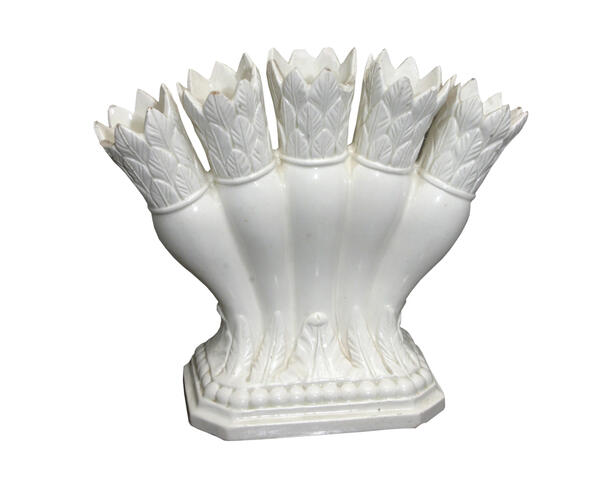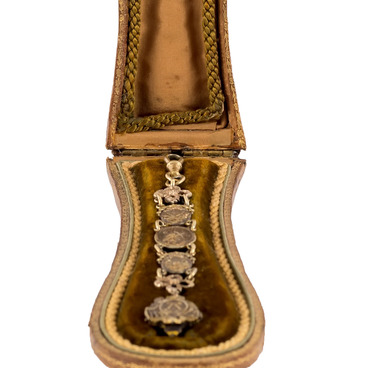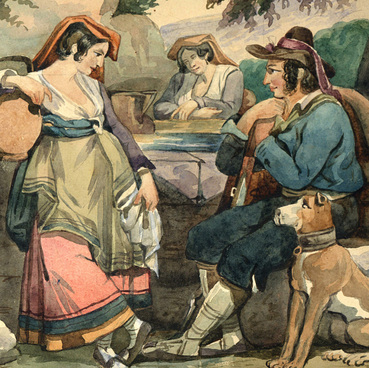Special vases for tulips were invented in the Netherlands in the 17th century. They were designed for expensive and exotic tulips. Thanks to its unusual shape, the vases allowed not only to demonstrate the beauty of each flower, but also to indicate the wealthiness of the owners. By far not every aristocratic family could afford them.
Tulip vases could have different shapes. Their distinctive feature was a separate flute for each stem. Eventually, it turned out that the vases were so beautiful that they themselves could serve as a beautiful decoration of the interior.
In Russia, the first bulbs of garden tulips came from Holland under Peter I in the late 17th and early 18th centuries. Prince Vyazemsky, Countess Zubova, Count Alexey Razumovsky were passionate amateurs and collectors of these flowers. Until the late 19th century, tulip bulbs were imported from abroad and were very expensive, so only very wealthy people could afford to grow them.
Unusual tulip vases have entered Russia along with the tulips. Russian ceramists rethought the shape of the European vases and created a smoother version of it, which was consistent with the shape of the flower’s bud.
The tulip from the house of Boratynskiy was made at the MezhigOrskaya faience ware factory in the Kyiv governorate in the 1830s. Kyiv masters presented their products for the first time in Petersburg under Catherine the Great. The Empress was sympathetic to the idea of building a factory in Mezhigorye and since then it has become one of the centers of ceramic art. From 1822 the factory was placed under the control of the Tsar’s cabinet and worked on orders of the imperial court.
The factory produced more than 120 types of different faience products every year. Part of the products were delivered to Saint Petersburg. Some remained in Ukraine. Initially, the forms were borrowed from the British, as was the case with the tulip vase from the Boratynskiy Museum. But later the masters found their own original solutions. That is why the Mezhigorye Factory’s products are still valued among collectors.
Tulip vases could have different shapes. Their distinctive feature was a separate flute for each stem. Eventually, it turned out that the vases were so beautiful that they themselves could serve as a beautiful decoration of the interior.
In Russia, the first bulbs of garden tulips came from Holland under Peter I in the late 17th and early 18th centuries. Prince Vyazemsky, Countess Zubova, Count Alexey Razumovsky were passionate amateurs and collectors of these flowers. Until the late 19th century, tulip bulbs were imported from abroad and were very expensive, so only very wealthy people could afford to grow them.
Unusual tulip vases have entered Russia along with the tulips. Russian ceramists rethought the shape of the European vases and created a smoother version of it, which was consistent with the shape of the flower’s bud.
The tulip from the house of Boratynskiy was made at the MezhigOrskaya faience ware factory in the Kyiv governorate in the 1830s. Kyiv masters presented their products for the first time in Petersburg under Catherine the Great. The Empress was sympathetic to the idea of building a factory in Mezhigorye and since then it has become one of the centers of ceramic art. From 1822 the factory was placed under the control of the Tsar’s cabinet and worked on orders of the imperial court.
The factory produced more than 120 types of different faience products every year. Part of the products were delivered to Saint Petersburg. Some remained in Ukraine. Initially, the forms were borrowed from the British, as was the case with the tulip vase from the Boratynskiy Museum. But later the masters found their own original solutions. That is why the Mezhigorye Factory’s products are still valued among collectors.



